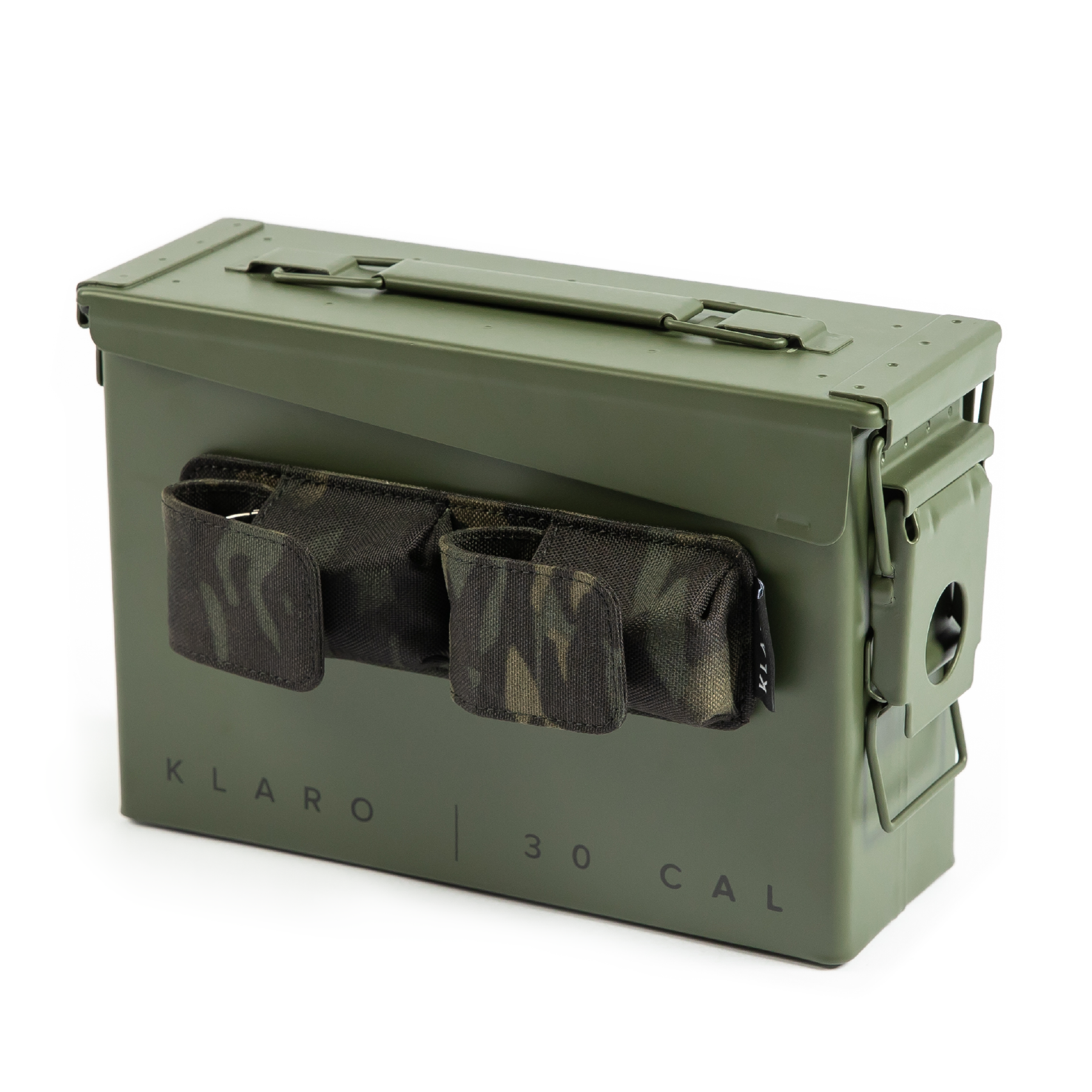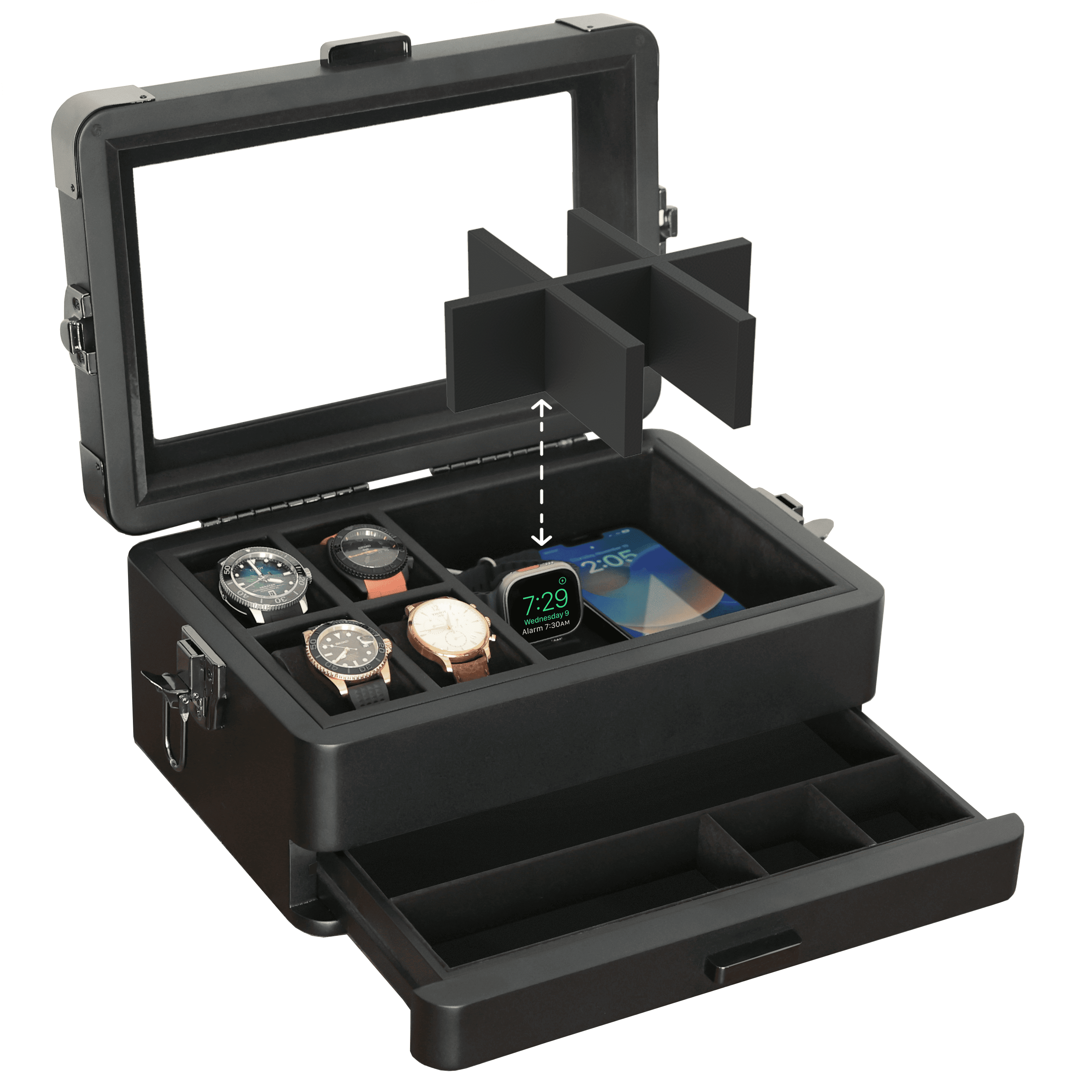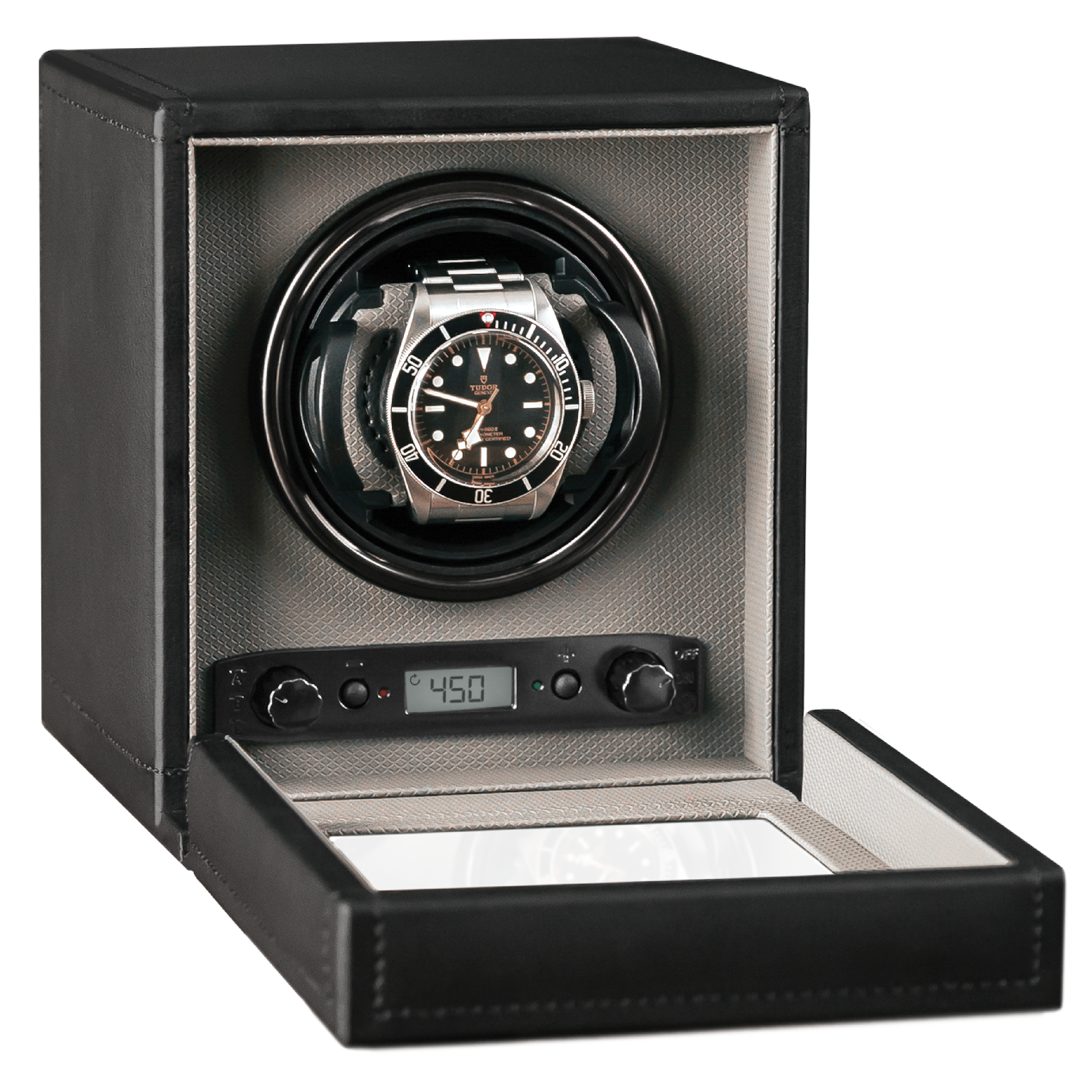Since the advent of the cigar cap, cutting a cigar has differentiated this tobacco form from others because it necessitates a prep tool. (Or does it?) You’ll hear cigar smokers swear by various ways to cut a cigar, from v-cutters to punch cutters to guillotine cutters, and the advantages of each—so long as the blade or cutting edge is sharp enough. You’ll also hear them lament the experience of forgetting or losing their cutter when it’s time to smoke. Because there’s nothing worse than having a cigar but not having a cutting tool or one sharp enough to do the job. All dressed up with nowhere to go? Let’s explore how to cut a cigar without a cutter in the event you are ever caught in such a nab.

Understanding Cigar Anatomy
We mentioned the infamous cigar cap and alluded to the fact that this component was introduced late in the long evolution that’s brought us the modern day cigar. Now, the cigar cap plays a pivotal role in cigar construction: it’s the piece of tobacco that folds over the wrapper and binder tobacco to hold those components in place, improving the structural integrity of the cigar.
Note, while most cigars are open at the foot, some perfectos are closed at both ends.
Each cigar cap must be cut to allow smoke to be pulled through the end. How you cut the cap can determine how much smoke comes through, how well your cigar holds together, and even how well it burns. So you must understand the different methods of cutting a cigar and how each can affect the overall experience.

Exploring Different Cutting Methods
Cutting a cigar opens the airflow to allow the draw—or air intake—when a smoker pulls smoke from the burning end of the cigar to the mouth. This cut can be small or large, notched in a “V” or even punched out—hence the various cutter types. What it can’t be is so large that it cuts off the cap, causing the cigar to unravel.
Below are the most common ways to cut a cigar:
- Straight Cut Method
- Punch Cut Method
- V-Cut Method
- Pinch & Tear Method
Each method cuts or opens the cigar differently, creating a channel in the cigar to allow the draw. The first three methods in the list above are the most common ways to cut a cigar, and each requires a specific tool. Other cuts exist, such as the shuriken method, which makes a five-sided star-shaped cut, but these are less common and more nuanced.

Tools and Materials for Cutting
Rather than deem one cutter type better than another, I like to compare cigar cutters to the types of knives in my kitchen block. It’s not that I prefer the chef’s knife over the cleaver. It’s just that the chef’s knife is the right tool for the job more often than the cleaver. Different cigar cutters make different cuts. It’s up to you to learn and decide which is most appropriate for different cigars and situations.
A cigar cutter is a small, hand held unit that snips off the cap of the cigar. Conveniently, like many kitchen knives, the name of the cutter indicates its use. A v-cutter cuts a v-shaped notch in the cigar. A cigar punch cutter punches a circular channel out of the cigar. There are a couple of different types of “straight cutters”, including, arguablly, a knife, but the majority of traditional straight cutters are single or double guillotine-style tools that snip the tobacco.
Which you use is up to you. But—again, like knives—there are some instances when one tool is more appropriate than another.

Preparation Before Cutting
Before you cut a cigar, find the cap. There are many different types of cigar caps. And it’s worth an education to learn which is which. But, on most cigars, you can identify the cap by finding the straight line or two lines (or three) that wrap around the head of the cigar. This is the button of tobacco that’s placed and glued over the wrapper. Inspect your cigar before cutting and determine where that cap is. Do not cut below it.
Now is a good time to also inspect your cigar for any dryness or cracking that might compromise the integrity of the cigar. If the head of the cigar seems dry, you may wet it prior to cutting it in order to reduce the potential of cracking the tobacco with the blade instead of cutting it.
Choosing a cigar cutter is based on preference. But some work better on certain types of cigars. On a tapered or pointed cigar, for example, a punch cutter is impossible to use. Meanwhile, v-cutters and punch cutters work better on cigars with bigger ring gauges. As you smoke more cigar types, you will learn which scenario is best for the different cutting methods.
How to Cut a Cigar Using Different Methods
While practice is in order, we wouldn’t want you to ruin a lot of perfectly good cigars trying out new cutting methods and tools. So below are step-by-step instructions for each method of cutting a cigar.
Let’s start with the straight-cut method:
Straight Cut Method
- Find the cap line. Do not cut below this line!
- Inspect your cigar for dryness, wet the cap if you are worried about cracking.
- Place the single or double guillotine blade against the tobacco leaf and align your cut.
- Choose a spot above the cap line that exposes the internal tobacco for a good draw.
- When ready, make a swift and decisive cut.
- Inspect your cut and ensure no strands are loose.
Punch Cut Method
- Inspect your cigar for dryness and wet if necessary to prevent cracking.
- Ensure the cigar head is broad enough for the size of the punch cutter.
- Place the metal cylinder of the punch in the middle of the cap.
- Gently twist and push the punch cutter into the cigar.
- Pull and extract the cut.
- Inspect for any loose edges or strands of tobacco.
V-Cut Method
- Select a v-cutter with a sharp, clean edge.
- Inspect your cigar for dryness, wet the cap if you are worried about cracking.
- Place the head of the cigar in the cutter and determine your depth.
- Place the blade where you intend to cut.
- Make a swift decisive cut.
- Inspect for any loose edges or strands of tobacco
Pinch & Tear Method (Cuban Cut)
- Wet or “taste” the cigar, regardless of dryness, loosening the cap.
- Find the cap. Place your thumbnail along the seam.
- Loosen and pry the cap edge with your thumb, lightly pinching the cigar.
- When the circle is complete, tear the cap off, careful not to tear the head.
Your exact process may vary depending on the cigar, the cutter, and your preference. But the cut should leave a clean opening that allows a smooth draw. Be sure to take a few cold draws after cutting your cigar to ensure flow.
Tips for a Perfect Cut
The more cuts you perform, the more you’ll learn. But let us help you save time and, hopefully, prevent a few good cigars from getting ruined.
First and foremost, ensure you don’t cut too deep, especially with a straight cut. The best tactic is to cut above the cap line. You also want a straight, even angle so you don’t happen to cut below the cap on the other end with a single guillotine cutter. An uneven cut will also lead to an uneven burn.
Make sure your blade is sharp. A v-cutter without a sharp edge will only mash the tobacco, ruining the head. A dull guillotine will not create a smooth edge but will rip the tobacco instead of cutting it.
Avoid over-wetting the tobacco, as this can prevent a clean cut from the blade and may cause the tobacco to tear instead of cut.
Factors Affecting Cutting Techniques
So, what cut for what cigars? (Or wrappers, sizes, shapes, thicknesses…) Consider the following advice for different cigar sizes and shapes:
-
Straight cut is appropriate for most shapes and sizes but particularly for standard parejos. Versatile for both thick and thin cigars.
-
Punch cut suits larger ring-gauge cigars, making a small hole in the cap of the cigar, limiting the drawing area, which you might want with thicker cigars as it concentrates the smoke and enhances the intensity of the flavor.
- V-cut is ideal for torpedoes or other tapered cigars where the head of the cigar comes to a point. The V-cut can also provide a larger surface area without compromising the integrity of the cap, which is helpful for tapered cigar ends.
And for different wrappers and thicknesses?
-
If the wrapper is delicate or thin, a sharp double-bladed straight cut helps avoid tearing the wrapper. This allows for a clean and precise slice.
-
For thicker, more resilient wrappers, a punch cut avoids the risk of unraveling or tearing the wrapper, which can sometimes occur with other cuts on certain wrappers.
- Good for medium to thick wrappers, the V-cut can help prevent the wrapper from unraveling, which might happen with a straight cut, especially if not done cleanly. It also doesn’t cut as deep as a full straight cut, preserving the cigar’s structure.
And based on your personal preference?
-
Those who like a wide, open draw will likely prefer the straight cut. It allows for maximum smoke output and ease of draw, suitable for those who enjoy a full, robust smoking experience.
-
For smokers who prefer a tighter draw and a more concentrated smoke, go with the punch cut. It’s also a more portable option since many keychain tools and lighters come with punch cutters.
- Some smokers prefer the V-cut for its middle ground between a punch and a straight cut. It provides a more concentrated draw than a straight cut but with more airflow than a punch.
But, please, don’t just take our word for it. As you experiment with different cuts and cigars you will develop your own list of suggestions and preferences. Embrace the learning experience.
Troubleshooting: Dealing with Cutting Challenges
So what happens if you make a bad cut? Well, not every mistake is salvageable, and that’s especially true if you cut below the cap and the wrapper begins to unravel. Which is why it’s so important to get it right the first time.
But you may be able to correct uneven cuts by re-cutting the cigar. Or, if the cut is too shallow, you might be able to re-cut (again, ensure you don’t cut beneath the cap).
If unraveling begins, you may choose to put your cigar back into the humidor to reconstitute somewhat but know the cigar will never return to its full integrity. The same goes if you have a cigar that is especially dry and will be prone to cracking. Place this back in the humidor for a few weeks.
Advanced Cutting Techniques
The good news? You’re not limited to any of these prescribed cuts. While there’s certainly value to tried-and-true methodologies, cigars are about understanding traditions and experimenting around them. The same goes for cutting. You’ll meet other smokers who use such techniques like the following:
- Double Cut Method
- Slant Cut Method
- Torpedo Cut Method
Each achieves an improved draw for a different cigar type or situation. Some smokers prefer the slant cut method, for example, because it provides them a more robust draw. It’s all good as long as it serves the smoking experience and does not compromise the structural integrity of the cigar itself.
Safety Precautions and Best Practices
Any time you are working with sharp tools like cigar cutters, safety comes first. While all cutters are potentially dangers, those with an exposed, contracting blade are especially risking. That includes straight, guillotine-style cutters and v-cutters
Keep your cigar cutters in a designated area, like your humidor drawer, and treat them as you would fire-making utensils or knives. Kids and those inexperienced with cigar cutters may access your cutters and hurt themselves if they are left out.
Cutters dull over time. Maintaining your cutters will help them last longer and protect your cigars. Sharpening your cigar cutter is an important yet somewhat tricky step. We recommend using the correct blade sharpening tools required to hone and sharpen the blade.
Summary of Cutting Techniques
Whether you choose a straight, v-cut, punch, shuriken, or any other style to cut your cigar, remember that the most important quality is a good draw that allows you to experience the cigar fully and allow it to burn evenly throughout. Never use a type of cutter just for aesthetics or for popularities sake, because the cut serves the cigar, not the other way around.














